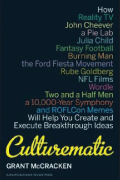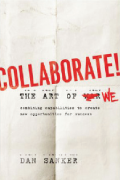TD Magazine Article
Keep on Growing
A review of Great Leaders GROW: Becoming a Leader for Life by Ken Blanchard and Mark Miller
Fri Jun 08 2012
Great Leaders GROW: Becoming a Leader for Life

By Ken Blanchard and Mark Miller
(Berrett-Koehler, $22.95, 144 pp.)
Bestselling authors of The Secret, Blanchard and Miller team up again to write Great Leaders GROW. In this book, the duo emphasizes that leaders must never halt their personal growth journey, both at home and in the workplace. The authors imply that if one's personal growth ceases, he will eventually fail as a leader.
Blanchard and Miller use the acronym GROW to explain what it means to evolve as a leader: gain knowledge, reach out to others, open your world, and walk toward wisdom. Their theory appeals to a broad audience because, according to the authors, holding a leadership position is not necessary for one to be a leader.
The book is relatively short in length, but it provides sufficient content to effectively convey the authors' message. It is written in narrative form, as a simple fable. Therefore, the reader is not overwhelmed with an abundance of peripheral clutter about unnecessary characters, uncommon names, and unrelated side events.
The story begins when the main character, Blake, is preparing to graduate from college. Blake had recently lost his father; this event adds to the anxiety he is experiencing with the search for his first job. As the story progresses, Blake understandably meets a variety of colleagues and uses his experiences with them to develop his leadership skills.
I found the rate at which the authors allowed Blake to develop his leadership skills to be somewhat superhero in nature, and almost a challenge to my intelligence. In no time Blake penetrates the defenses of a co-worker who had never before demonstrated the slightest soft skills to anyone in the organization. Soon Blake is recognized by—among others—the company president as having great leadership abilities. In essence, Blake almost singlehandedly saves the company from its unrealized self-destruction while personally practicing the recently learned components of GROW.
Aside from the larger-than-life main character, I found the story to be quite effective. If you would like to learn how to recognize and develop your leadership skills, even if you are not currently in a leadership position in the workplace, this book is a source for quick, to-the-point ideas for personal and professional growth.
I give the book three out of four cups.
Culturematic: How Reality TV, John Cheever, a Pie Lab, Julia Child, Fantasy Football . . . Will Help You Create and Execute Breakthrough Ideas

Grant McCracken
(Harvard Business Review Press, $28, 304 pp.)
According to the author, "culturematic" is a machine or mechanism that allows a corporation to test the world, discover meaning, and unleash value. McCracken, an anthropologist, describes how culturematics can help test and explore culture to spur innovation. The author gives many examples of how corporations, such as Coca-Cola and Apple, knowingly and unknowingly used culturematics to improve their business and increase profitability. McCracken also lays out a blueprint so that managers can develop their own culturematic to innovate for their industry. This book is for all businesses and is written to inspire new innovation and creativity.
StoryBranding: Creating Stand-Out Brands Through the Power of Story

Jim Signorelli
(Greenleaf Book Group Press, $24.99, 220 pp.)
Signorelli wrote StoryBranding to "recognize a more powerful and creative way to define and sell a brand's unique value." He believes that marketing and advertising agencies do too much telling and not enough showing. Through StoryBranding, Signorelli presents a method to market and develop a brand in the way an author develops characters. He outlines his process of the "6 Cs," which are collecting the backstory, characterizing the brand, characterizing the prospect, connecting to characters, confronting the obstacles, and completing the story.
Collaborate: The Art of We

Dan Sanker
(Jossey-Bass, $29.95, 224 pp.)
Sannker wrote Collaborate: The Art of We to encourage collaboration in today's cutthroat business world. He believes that in business too much is based on competition and not enough on teamwork and alliances. Globalization, technology, and cultural changes have opened the door for collaboration to be the new winning ingredient for business success. The book includes many examples of thriving companies, such as Netflix, that use collaboration, and the tools they use to achieve it. The author gives insider information on how to establish business collaboration, as well as keys to successful collaboration. These keys include maintaining commitment and using conflict productively.
What's on Jane Hart's Bookshelf?

Drive: The Surprising Truth About What Motivates Us by Dan Pink. Pink reveals the three elements of true motivation—autonomy, mastery, and purposes. Two key quotes for me from this book are "A sense of autonomy has a powerful effect on individual performance and attitude," and "Control leads to compliance; autonomy leads to engagement."
Organizations Don't Tweet, People Do: A Manager's Guide to the Social Web by Euan Semple. In this collection of articles, Semple shows that the use of social tools in organizations makes two important things better at once—business outcomes and the working lives of everyone in the business.
Linchpin: Are You Indispensable? by Seth Godin. In this book Godin discusses the people who invent, lead, connect others, make things happen, and create order out of chaos. These are the people who figure out what to do when there's no rule book. Linchpins are, therefore, the essential building blocks of great organizations.
